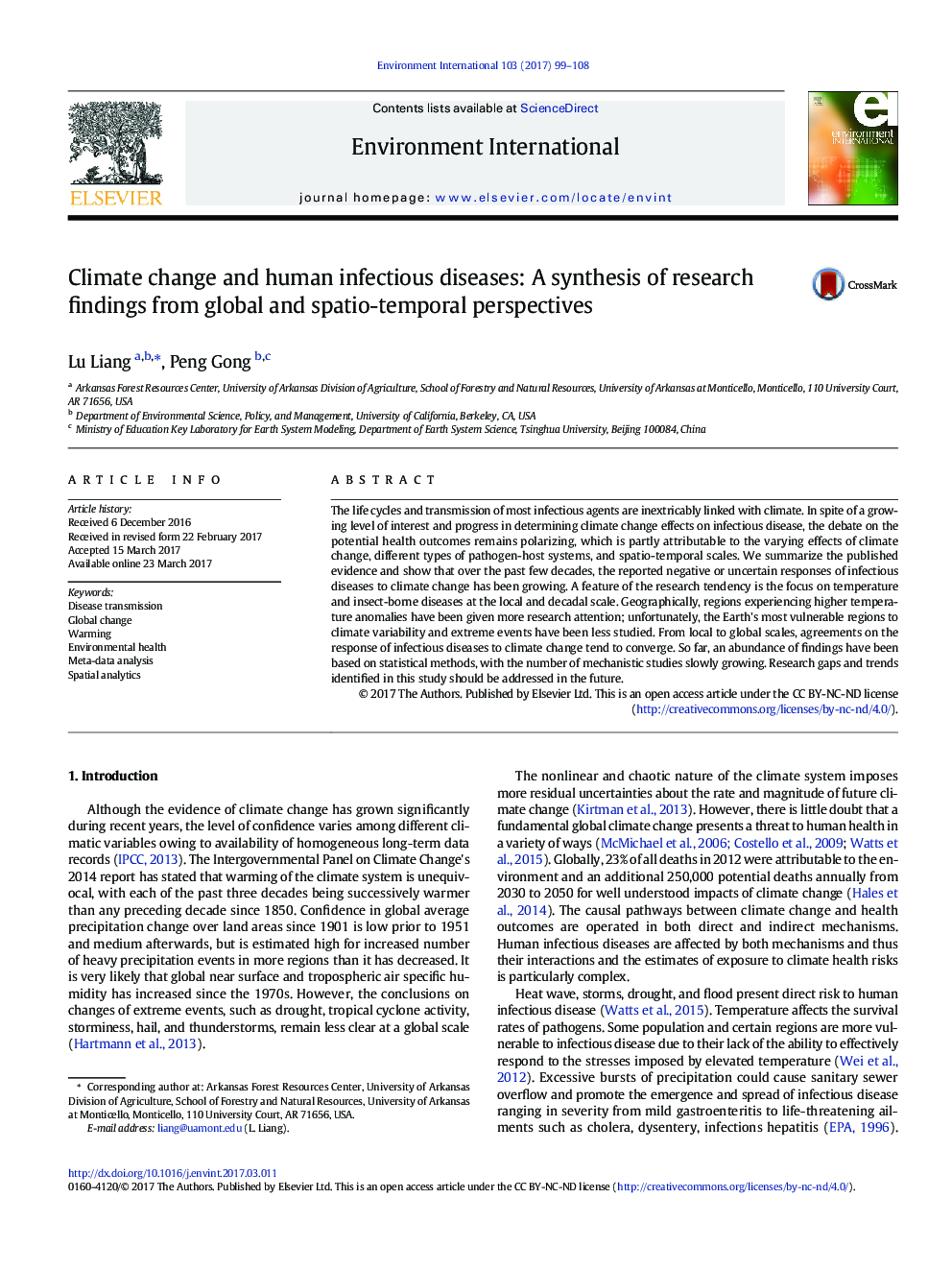| کد مقاله | کد نشریه | سال انتشار | مقاله انگلیسی | نسخه تمام متن |
|---|---|---|---|---|
| 5748233 | 1619027 | 2017 | 10 صفحه PDF | دانلود رایگان |
- The reported negative or uncertain CC-ID relations consistently grow.
- Temperature and insect-borne diseases is a long-lasting heat topic.
- Most vulnerable regions to climate variability have not gain enough attention.
- CC-ID relations tend to be less controversial at larger spatial scale.
The life cycles and transmission of most infectious agents are inextricably linked with climate. In spite of a growing level of interest and progress in determining climate change effects on infectious disease, the debate on the potential health outcomes remains polarizing, which is partly attributable to the varying effects of climate change, different types of pathogen-host systems, and spatio-temporal scales. We summarize the published evidence and show that over the past few decades, the reported negative or uncertain responses of infectious diseases to climate change has been growing. A feature of the research tendency is the focus on temperature and insect-borne diseases at the local and decadal scale. Geographically, regions experiencing higher temperature anomalies have been given more research attention; unfortunately, the Earth's most vulnerable regions to climate variability and extreme events have been less studied. From local to global scales, agreements on the response of infectious diseases to climate change tend to converge. So far, an abundance of findings have been based on statistical methods, with the number of mechanistic studies slowly growing. Research gaps and trends identified in this study should be addressed in the future.
Journal: Environment International - Volume 103, June 2017, Pages 99-108
